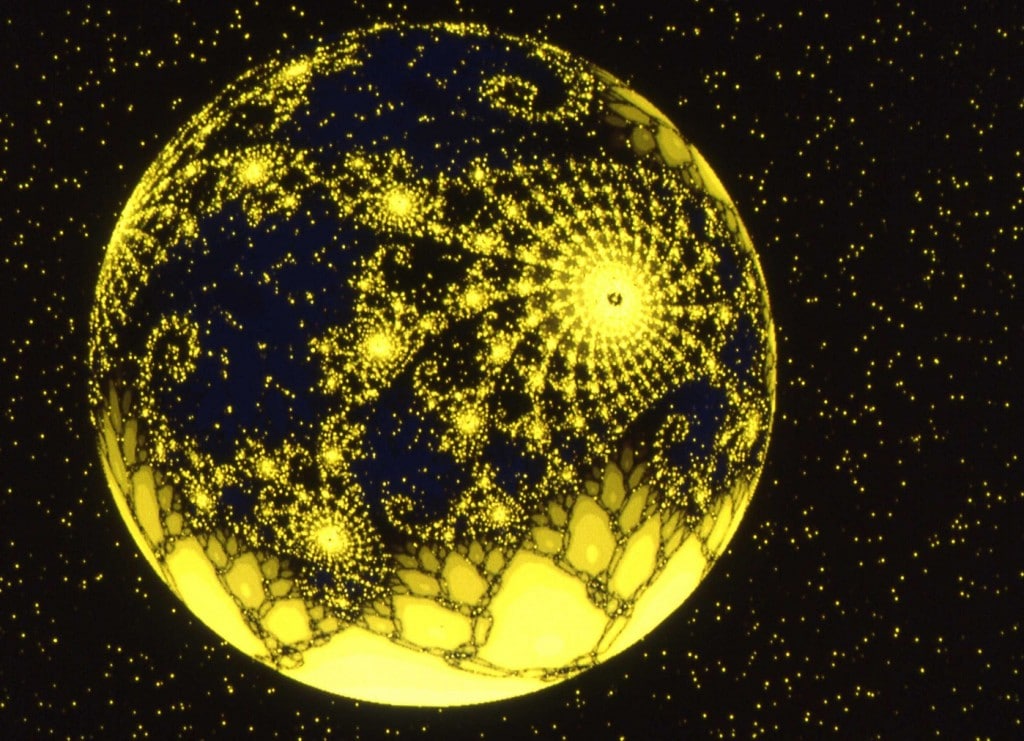
DMT allows one to travel outward, seemingly meeting entities and viewing alien worlds, while 5-MeO-DMT renders the concept of travel—and self—meaningless, by becoming one with existence itself. | Image source: Wikimedia Commons via Michael Michelitsch
Imagine you have to choose between two experiences. In the first, your vision fills with brightly colored fractals. Your thoughts remain mostly coherent as you’re transported to an otherworldly plane where you meet—and perhaps learn from—entities beyond your comprehension. If you choose the second, within moments, the world shatters into white light and then your body does too. The concept of “I” disappears as the boundaries between internal and external disappear, you lose all sense of self, and you become one with the universe itself. This universal connection stays with you as your interactions with others take on greater significance.
The first experience is typical of vaporized DMT, while the second is 5-MeO-DMT. Though they share a name — and there are some parallels in their brief and very intense effects — the two are worlds apart. Even in their chemical structures, 5-MeO-DMT is about as different from DMT as psilocybin is. Both have been used in traditional South American shamanic practices for thousands of years, but in different regions and to different ends. The differences between their subjective effects can’t be overstated, so it’s important to understand what each one offers—and which is right for an individual seeking psychedelic treatment.
DMT
To start with the basics, DMT is short for N,N-Dimethyltryptamine. DMT has been found in many plants and animals—from underwater coral-like organisms all the way to mammals. It appears that humans make it in our own bodies. Some say that it occurs naturally within every living organism, which would mean that it is somehow intertwined with the very nature of life itself. It is a truly ancient molecule with properties we have yet to fully grasp.
DMT has a long history of shamanic use in traditional ayahuasca brews, which combine DMT-containing root bark with other plants that contain a type of chemical called an MAOI (monoamine oxidase inhibitor, for the truly curious) — the MAOI makes DMT last much longer in our bodies, extending the psychedelic experience for hours. This brew has been increasingly explored in recent years for its healing properties, including as a treatment for substance addiction. Ayahuasca healing has been described as the “loving matriarch” in comparison to ibogaine’s “harsh patriarch,” helping individuals to break down the defense mechanisms they may have put up that prevent them from connecting with others.
5-MeO-DMT
5-MeO-DMT—short for 5-Methoxy-N,N-Dimethyltryptamine—looks just like DMT on both a macro and micro level, with a few extra atoms attached (which is what “5-MeO” in the name tells us). That slight change makes all the difference, though.
Like DMT, 5-MeO-DMT also appears in many plants and animals—including the venom of a particular toad—but has not been found in humans. While the DMT experience tends to be highly visual, 5-MeO-DMT is more like a perspective shift. Some have said it’s something like a near-death experience.
5-MeO-DMT has a traditional, shamanic use as well, in the form of a powerful “yopo,” or powder blown forcefully into the nose. Being somewhat more obscure than DMT, the potential of 5-MeO-DMT for healing substance addiction is less well known, but some progressive treatment centers have found it extremely useful.
One such is the Crossroads Treatment Center in Northern Mexico, which specializes in combination ibogaine and 5-MeO-DMT therapy. 5-MeO-DMT seems to work synergistically with the ibogaine, by allowing patients to integrate the ibogaine with a transcendental or mystical experience. It helps patients recontextualize their experience and ultimately can give them inspiration and motivation.
Each of these substances holds tremendous untapped healing power, and treatment experts and patients alike are helping to determine their unique potential. DMT, in the form of a long-lasting ayahuasca experience, may help those attempting to open themselves up, to travel outward to bring back insights. 5-MeO-DMT, on the other hand, has its place as a very brief but effective supplement to an ibogaine experience as a way to become one with the universe.

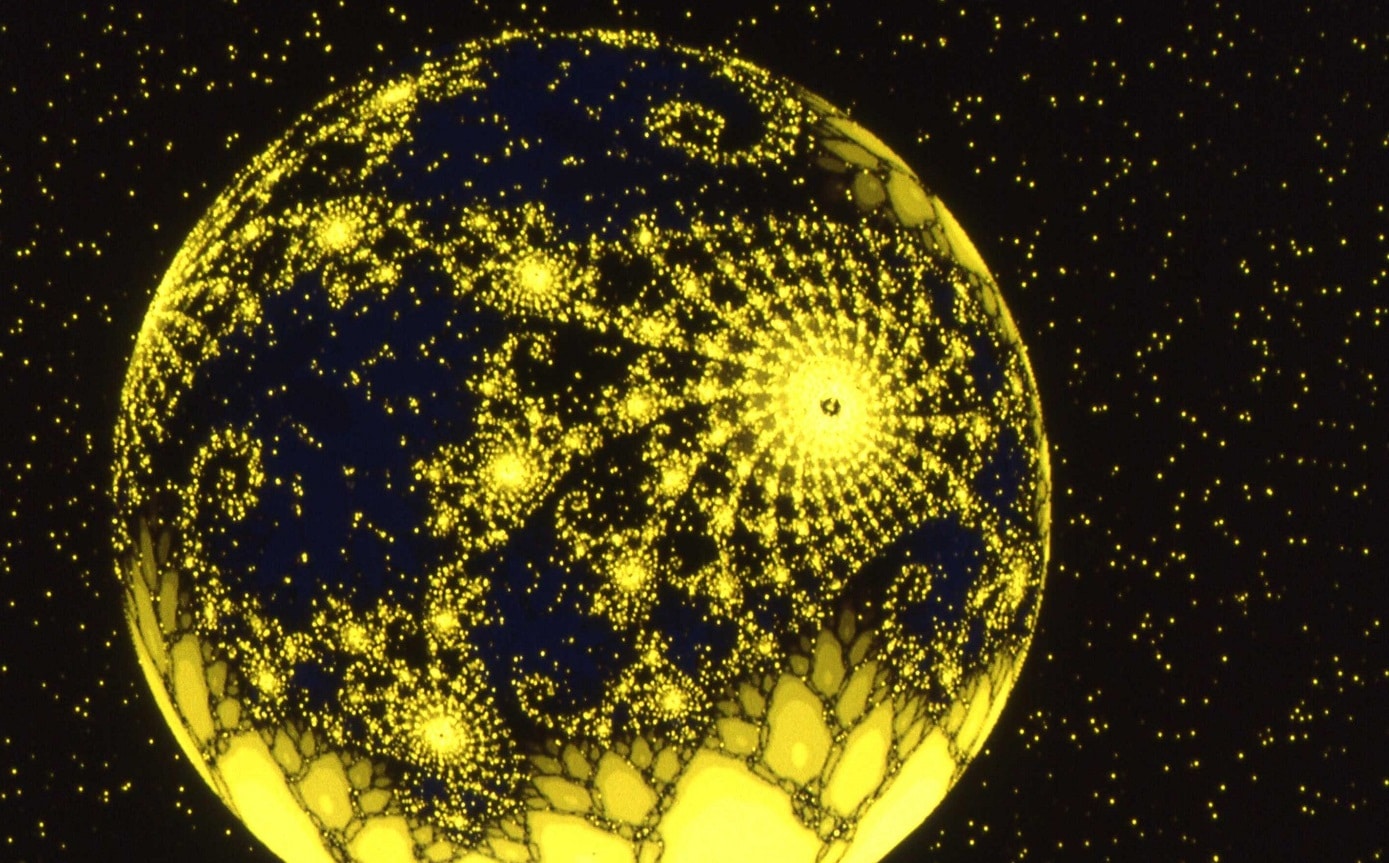
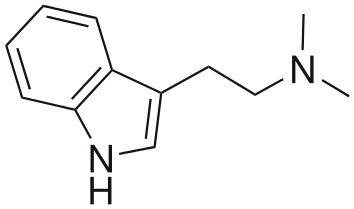
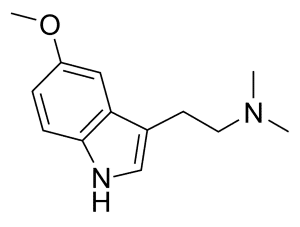

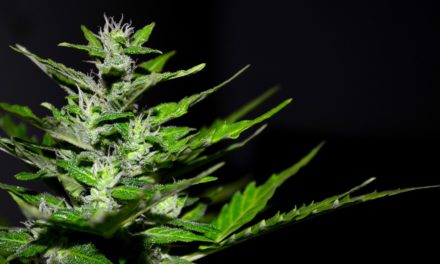
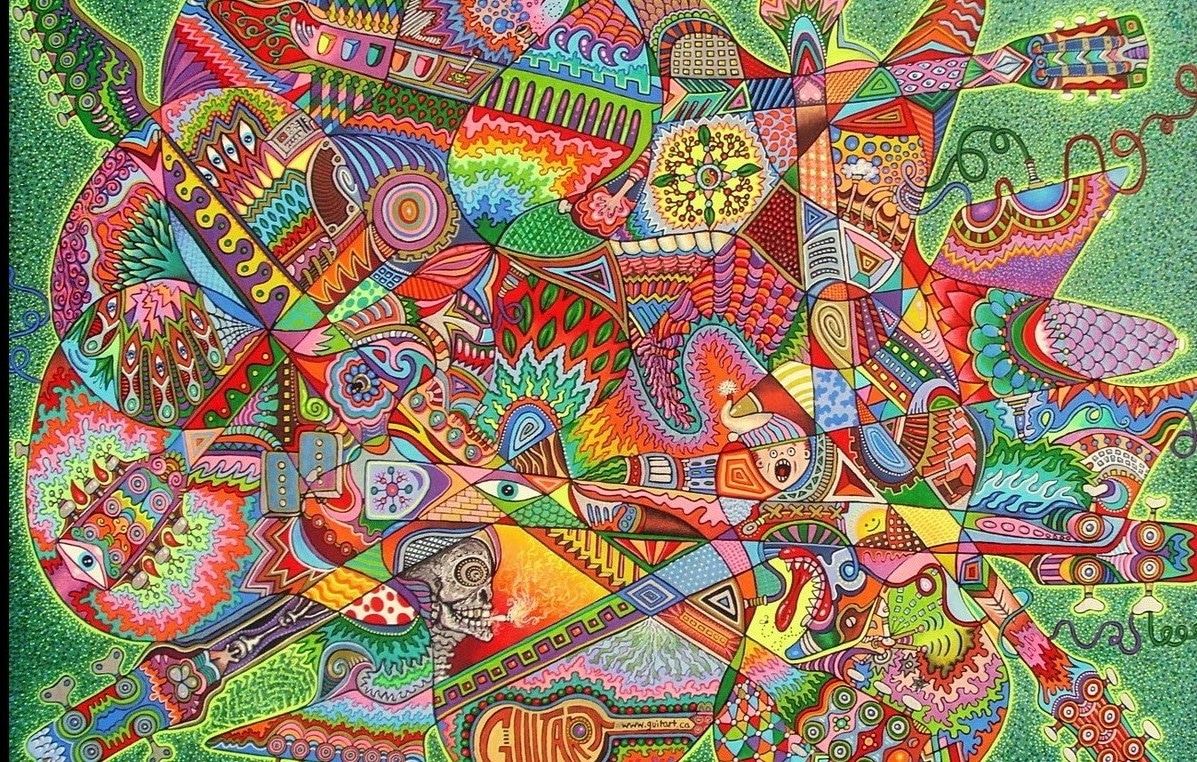






Hi there,
I’ve just found your site, great info, nice work, I like! Just a small suggested correction for the DMT vs 5-MeO-DMT article…5-Meo, like DMT, is another endogenous compound. See:
https://www.ncbi.nlm.nih.gov/pmc/articles/PMC3028383/
All the best 🙂
Sam
“Like DMT, 5-MeO-DMT also appears in many
plants and animals—including the venom of a particular toad—but has not
been found in humans.”
This is actually AFAIK not correct. 5-Meo-DMT, just like DMT has been found in humans! They are both mostly accepted as known endogenous substances.
It is just not known where exactly they are produced in the human body. Some suggest that they are produced in the pinneal gland, but this has not been proven yet.
This is also why it’s not 100% proven that the body produces these substances. But as they can be detected in the human, and as they are broken down very quickly by the human metabolism, it is very very likely that these substances are produced within the body and have not been taken by meal.
Can you please tell any source for proof of endogenous 5-MeO-DMT?
References regarding 5-MeO-DMT’s endogenous presence in humans:
Sample analysis of human cerebrospinal fluid included 5-MeO-DMT. (Christian et al. 1975 ref Trout’s Notes).
Found in cerebrospinal fluid of some psychotics and a few normal people by Corbett et al. 1978. Narasimhachari et al. 1971b reported it was more common in psychotics than normals (ref Trout’s Notes).
Also detected in some patients by Smythies et al. 1979 but it is
not clear in their account exactly which subjects showed its presence
and which did not. (ref Trout’s Notes).
From:
https://wiki.dmt-nexus.me/5-MeO-DMT
In Panama last winter my wife and I did 5 Meo dmt in the form of the excretions from the gland of a toad. Up until that point I had been drinking for over 30 years and was up to 50-60 drinks/week. After a 10 minute trip, I have not had a drink in almost 8 months. It taught me what reverence is and my life has dramatically improved since this experience.
Wow thanks for sharing this important information.
Can I physically and visually tell if I have 5-meo dmt or just dmt? I don’t know how to spot it test to see the difference…. please inform me, thanks!
The DMT containing compound in Ayahuasca is usually from a leaf not root bark. Shaman in the Amazon usually use the chacruna plant leaves (Psychotria viridis). The MAOI (in the form of harmine) is actually from a tree vine the shaman call ayahuasca or ayahuasco. I believe the drink is named after the vine because it is not what causes the visions, it is what drives the visions in the direction needed to find out what sort of illness needs remedying, with the help of the shaman. The ayahuasca vine (AKA vine of Death) not only makes the DMT orally active, it is a otent pergative and makes you sicker than sick and makes you, in a sense get your shit out in the open. Sometime non-metiphoically. If your talking therapy, I would recommend using ayahuasca in ceremony with an experienced shaman over the pure form of DMT or 5meo-DMT. Ayahuasca is a real medicine that everyone should experience if healthy enough and want true emotional guidance.